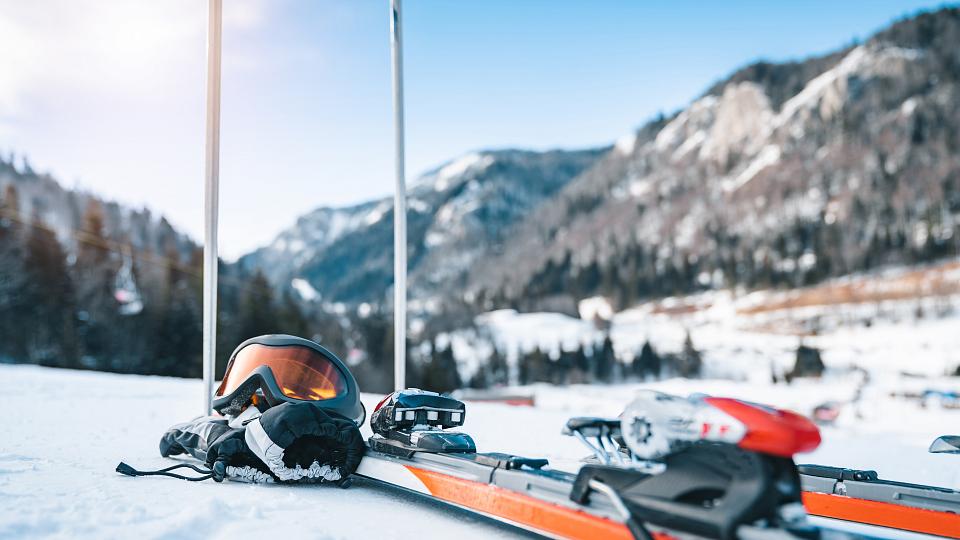
The Cold Hard Truth About Frostbite: Protect Yourself and Loved Ones This Winter
The sun is shining, and the powdery slopes are calling your name. Before you grab your skis and boots, take a few moments to make sure you’re winter ready. Prevention is your best defense against frostbite, which can wreak havoc on your body and cause permanent damage—even amputation.
With that in mind, stay in tune with your body and head back indoors when Jack Frost starts nipping at your ears, hands, or toes.
“Think of your body as a big bag of salty water,” says Courtney Lawrence, RN, community outreach coordinator at University of Utah Health’s Burn Center. “When you get cold, tissues beneath the skin start to freeze, and the cells in the salty water can turn to slush. That slushy water turns into ice crystals, which can cause cell damage and seriously impact your quality of life.”
Think Warm, Loose, and Dry
If you’re planning on spending some time outdoors in extreme weather (freezing and below), be sure to keep this checklist in mind:
- Loose-fitting layers of clothes
- Windproof and waterproof jacket
- A hat or headband that fully cover the ears
- A full-coverage face mask (balaclava)
- Mittens instead of gloves for optimal warmth
- Socks that fit well and wick moisture
- Waterproof footwear, preferably boots
Note: Loosen up on those laces! Too-tight footwear can cut off circulation, putting you at a higher risk for frostbite.
Watch for Warning Signs
Time is of the essence, so if you feel tingling, itching, or numbness, get inside and put on some dry clothes immediately. Keep a close eye on your extremities and watch for any of these symptoms:
First Degree Frostbite (Superficial): Also known as frostnip, this milder form of frostbite causes painful skin irritations characterized by a central white area surrounded by pink skin.
Second-Degree Frostbite (Superficial): Light-colored blisters tinged with pink surrounded by a red-colored rash.
Third-Degree Frostbite (Deep): Skin feels frozen and hard; wounds and blisters appear in purple, dark red, or black.
Note: Head to the emergency room at the first sight of blisters, which means you are at risk for permanent nerve damage or worse.
What Not to Do
Contrary to what you might see on TV, a shot of rum is not the quick fix you need to warm up. Here are some other commonly made mistakes that can prolong your pain and suffering:
Electrical items: Since your body is likely numb, you could burn yourself by using items like heating pads, electric heaters, and blow dryers.
Booze and caffeine: Hydration is key, so alcohol and coffee will not help your body recover. To hydrate your body, try drinking hot decaffeinated tea, water, or sports beverages.
A steaming bath: Due to numbness, you may not realize you're burning yourself by taking a bath in scalding water. Instead, fill a basin with warm water (about 102º F) to soak your wound.
Rubbing your body: Doing this can cause further pain because the frozen tissue under your skin can work like sandpaper.
Going back outside: Returning to the cold after rewarming can aggravate and intensify the frostbite damage.
Look After Your Loved Ones
Keep an eye on the clock when children and older adults are out enjoying the winter weather. Depending on the conditions, frostbite can happen in a matter of minutes, so it’s important to stay extra cautious.
“Children are more vulnerable than adults because they lose heat from their skin at a faster rate,” Lawrence says. “Older adults are also at risk because their bodies have a harder time regulating to the cold.”
To safeguard your loved ones from frostbite, pay attention to weather forecasts, especially the precipitation and windchill, and limit their time outdoors.
Lend a Helping Hand
In addition to children and seniors, people experiencing homelessness are highly vulnerable to frostbite as well as hypothermia. With the new Code Blue law in effect, several major cities are relaxing shelter restrictions and opening more beds during extreme weather events. You can also make a difference by donating winter outerwear to a local shelter.
.jpg)





